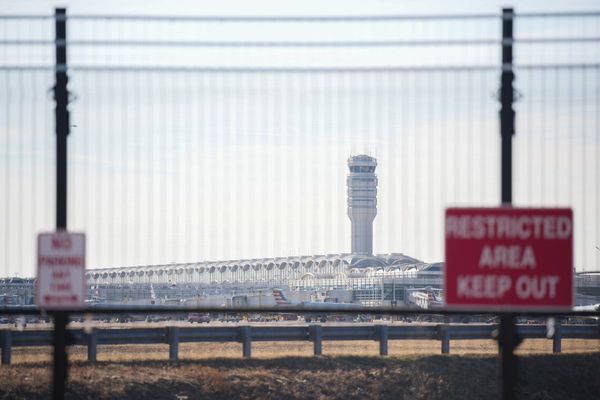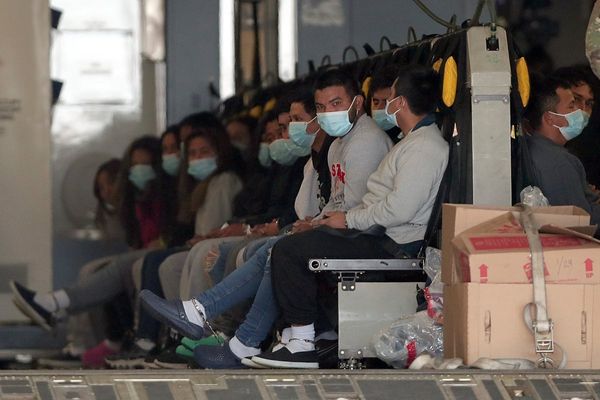
Disney World cast members, what the company calls its employees, must always present a smiling face to people visiting any part of Walt Disney's (DIS) massive Florida resort. That's because people are paying thousands of dollars to spend a few days at the self-described "most magical place on Earth."
The problem is that beneath those smiles, there's a major issue between the company and its employees. Disney World and its union have a major contract dispute that could lead employees to strike.
DON'T MISS: Disney World Shares Details On Its Next Major Ride Addition
A strike wasn't possible while Disney and the roughly 45,000 workers represented by the Service Trades Council Union (STCU) had a contract. That deal, however, has expired and the two sides are currently operating under a short-term extension to that deal.
If that extension expires, and no contract has been reached, Disney World's workers could (and probably should) strike. The key remaining issue is wages. Disney's workers want an immediate $3 per hour increase while the theme park company offered a $1 per hour per year increase for each of the next five years.
Over 96% of STCU members rejected the company's offer and that has led to an impasse. It's a very bad look for Disney which seems to be opting for the bottom line despite the significant cost of living increases caused by the pandemic in central Florida.
That's a potential public relations disaster for the company, which just saw it chief rival, Universal Studios Orlando (which does not have a union) raise its minimum wage to $17 per hour. And, when you're on the losing end of treating people well to a Comcast-owned (CMCSA) theme park, that's a dangerous place for a company that's supposed to represent happiness and magic to be.

Disney
Disney Ignores Economic Reality
Disney World workers want an $18 per hour minimum wage -- or $720 per week, $3,120 per month, and $37,440 per year for a 40-hour week. The company is offering a starting minimum wage of $16 per hour ($640 per week, $2,773, or $33,280 per year).
In both cases, the new wages would put Disney's workers below the average cost of living in Orlando, the closest large city to Disney World. In February, Expatistan, which tracks the cost of living in cities around the world, shared the following numbers which include rent, food, and transportation costs for living in Orlando:
- Family of four estimated monthly costs: $5,657
- Single person estimated monthly costs: $3,456
Disney's offer would put a single worker well below the cost of living while the union's counter-offer would not get single employees to that level. (A $20 hourly wage would just barely cross the threshold). A family fares a little better as two adults working full-time at Disney World would earn $5,546 per month, a bit below the cost of living, while $18 an hour would exceed it at $6,240 per month.
Asking for wages that come close to (or slightly exceed) the cost of living in an area where costs have been steadily rising does not seem like the union pushing the company too far. Disney World workers live in a tourist area where they compete for housing with investors, seasonal residents, and people fleeing high-cost (and cold) states in the northeast.
Disney has, at least according to the union, not been willing to adjust its offer, at least when it comes to wages.
"Despite the overwhelming message sent by Cast Members, Disney refused to add even one cent to its wage proposal. Moreover, Disney’s proposal today reduced retroactive pay for thousands of workers, making today’s proposal even worse than the offer already rejected," the STCU shared.
Disney's Orlando Living Equation Has Changed
The pandemic changed the demand for housing all across Florida. People from New York and New England flooded into Miami, then slightly north into Fort Lauderdale, then West Palm Beach driving housing prices up exponentially.
To put it into perspective, my wife, son, and I needed a bigger place to live during the pandemic so we sold out downtown West Palm Beach condo and moved into a larger rental in December 2021 at a cost of $2,400 for a 4-bedroom. A year later, we renewed at $2,700 per month, and then six months after that our landlord let us break our lease because he was able to rent the same unit for $4,000 a month.
Rising South Florida housing prices pushed people like us north (we bought a house about 45 miles north in Port St. Lucie) while others opted for Central Florida. In addition, retirees -- even well-off ones -- found themselves priced out of South Florida which made Central Florida/Orlando an attractive option.
That trend has settled down a little bit, but the needle is still moving up. That puts Disney workers in competition for housing with retirees, remote workers looking for a warm climate, and people like my wife and I (who bought a Disney-area condo as a second home with the profits from selling our condo).
Walt Disney needs to address this and take real steps to take care of its workers. That starts with paying a living wage. A company can't project an image of happiness and magic while forcing its workers to make choices between food and shelter. Nobody wants to think of Mickey Mouse or Cinderella sleeping in a car or going hungry.
Orlando used to be a cheap place to live which allowed Disney to pay lower wages. That's no longer true, so the company should step up and take care of the people it asks to take care of millions of guests a year.







